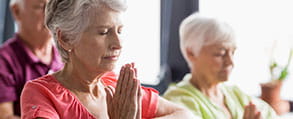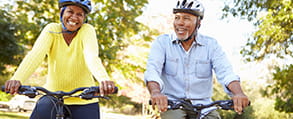Preventing falls at home
Even a minor fall can cause injury. Learn how to avoid them.

As we age, injuries that result from even a minor spill worsen. That’s why we’ve put together this page to share ideas on how to prevent falls and what to do it you should take a fall.
Start with a self assessment
Understanding your own risk is a great first step to avoiding falls. And that’s where the CDC’s STEADI program can help. They’ve put together a Stay Independent brochure that includes a fall risk assessment.
We recommend you complete this assessment to see how likely you are to fall. You can also use it as a conversation starter with your doctor. Talk about ways to prevent future falls and near falls. If you’ve had a fall or near fall, make sure to tell your doctor even if you didn’t get injured.
Download Your Copy of Stay Independent
We recommend you complete this assessment to see how likely you are to fall. You can also use it as a conversation starter with your doctor. Talk about ways to prevent future falls and near falls. If you’ve had a fall or near fall, make sure to tell your doctor even if you didn’t get injured.
Download Your Copy of Stay Independent
Make your home safer from falls
Your home could have safety hazards you’ve missed. They could increase your chances of falling. So, it’s always good to do a home safety assessment from time to time.
Download and use the CDC checklist below to see if you have any hazards or potential hazards that can be adjusted to keep your home safe.
Check for Safety: A Home Fall Prevention Checklist for Older Adults (cdc.gov)
Download and use the CDC checklist below to see if you have any hazards or potential hazards that can be adjusted to keep your home safe.
Check for Safety: A Home Fall Prevention Checklist for Older Adults (cdc.gov)
Know what to do if you should fall
Your actions after a fall can make the difference between a “serious” fall and a “less serious” one. We encourage you to download and review the pamphlet from the Public Health Agency of Canada. It covers steps to take if you fall or see someone fall including the best ways to get up and what to tell your doctor.
Download What to do After a Fall
Download What to do After a Fall







